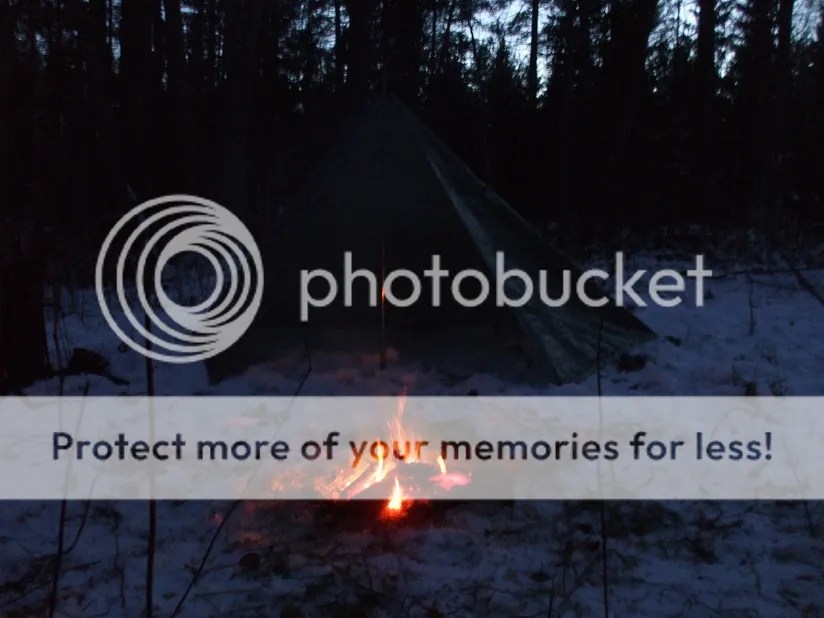Toward the end of March, I spent a weekend exploring the old farm woods and the surrounding area, finally locating all the boundary markers of the property and discovering some other interesting features of the “neighborhood” as well. At that time, there was still a good bit of snow on the ground, most of which has since melted, and the temperatures were a lot lower, too, with about -5ºC/+23ºF during the day and -12ºC/+10ºF at night.
Before choosing a new campsite and setting up camp, I wandered around looking for the back property markers, taking some pictures as I went along.





I found a nice, reasonably flat spot at a far corner of the property and set up the MIL-TEC tarp in my beloved Holden tent configuration. So far, I’ve been very pleased with this tarp, which I bought a little over a year ago.


Once my camp was set up, I located some potential firewood nearby. Besides a few smaller dead pine saplings, I found a nice larger dead pine which had partially fallen over some time ago. Getting a hung-up tree like this unstuck can be very dangerous, so I’m not going to give instructions on that there. All I will say is that it’s a good idea to read up on the subject and have an experienced tree feller go out into the field with you to show you how to do it. In general, though, the idea is to first cut the tree at the base and then carefully move up the trunk, cutting section by section, until it can be freed from the other tree.



I cut the trunk into campfire-sized pieces and also collected the dry branches from the top of the tree.

To ignite the dry branches, I would need something finer and easily flammable, so I went back to an area where I had remembered seeing lots of birch bark on the ground. This bark had been stripped off some trees when the loggers came through to thin out the forest last year.

After splitting up some of the sections of the pine tree I had dislodged and sectioned, I laid down some lower-quality, partially rotten pieces of wood in the spot I had chosen for the campfire. On this I placed a piece of birch bark, which I scraped with my BushProwler knife from Ilkka Seikku to create a fine pile of paper-thin shavings to ignite with my ferrocerium rod. I then added progressively bigger pieces of wood until the fire was ready for me to start heating up some food.








Once I had eaten and relaxed a bit, I decided to spend the evening exploring the area some more.




Plenty of animal sign:




Curiosity led me to climb some of the higher hills in the area, which rewarded me with a really nice view. First, looking down at my campsite:





This was followed by a short hike down to the lake, where I plan to do some fishing this season.


After hiking around, I sat by the fire for a long while, ate some dinner and watched the stars appear one-by-one as the sky darkened to night. I slipped into my nested sleeping bags in my poncho bivy and continued watching the sky through the doorway of my tent until I drifted off. After a good night’s rest, I arose in the morning, shook off the sleep and started the morning fire. Once again, I dined on Finnish rice pies (riisipiirakka) and a meat pie (lihapiirakka). I also boiled up some water for instant coffee in my Swedish mess kit lid.



Wanting to take advantage of being in the neighborhood, I packed up camp and hiked back to the cabin site, where I spent the rest of the afternoon working on the future homestead.
Hope you enjoyed this quick overnight trip report. Stay tuned for more!




























































































































